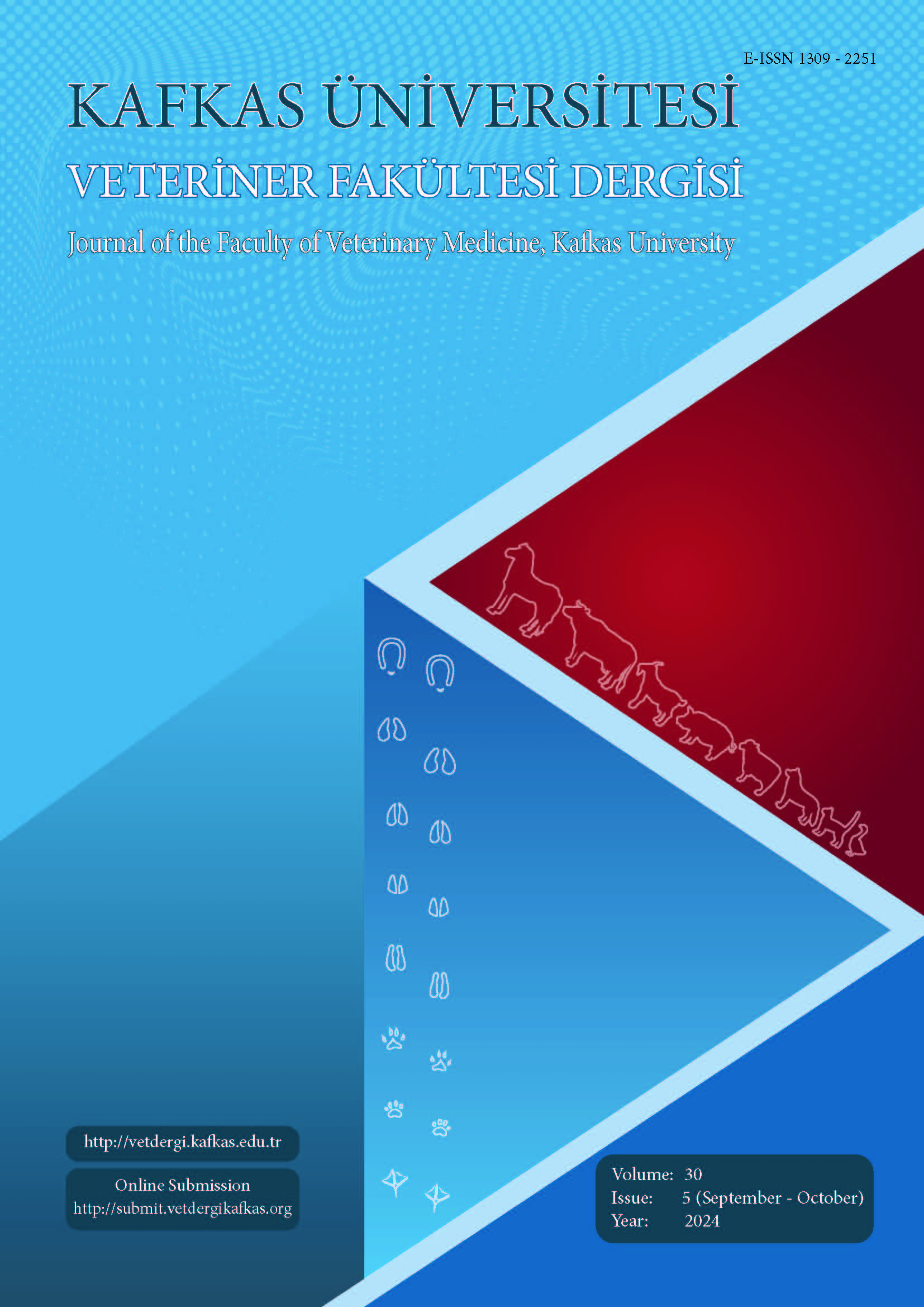Kafkas Üniversitesi Veteriner Fakültesi Dergisi
2024 , Vol 30 , Sayı 5
Genomic Diversity and Autozygosity-Based Signatures of Selection in Kangal Akkaraman Sheep via Genotyping-by-Sequencing
1Akdeniz University, Faculty of Agriculture Department of Animal Science, TR-07070 Antalya - TÜRKİYE
DOI :
10.9775/kvfd.2024.32339
In this study, genome-wide variability and selection signatures in Kangal Akkaraman
sheep were assessed by 238.103 bi-allelic single nucleotide polymorphisms (SNPs)
recovered from genotyping-by-sequencing (GBS) libraries processed in Illumina HiSeq
X Ten instrument. Summary statistics of genetic diversity such as minor allele frequency
(MAF), observed (HO) and expected (HE) heterozygosity were estimated at 0.32, 0.29,
and 0.30, respectively. A declining trend in effective population size was observed
through generations in which the current population was estimated at 978 individuals
150 generations ago. 608 of 647 runs of homozygosity (ROH) islands were classified into
≤2 Mb. Strong selection signals were identified in thirteen genomic intervals overlapped
with 17 protein-coding genes. The sheep quantitative trait locus (QTL) database
confirmed that these genomic regions were associated with economically important
traits such as milk content (KCNH5, KCNH7, LRP1B, SNAPC1, and SYT16) and fleece
yield (CCDC85A, EFEMP1, and PPP4R3B), parasite resistance (MMS22L and KLHL32),
fat deposition in the tail (JAZF1, TAXIBP1, EVX1, and HOXA13), and water-holding
capacity (KLHL1 and DACH1). This study implies that the Kangal Akkaraman sheep
will play a vital role in developing some genotypes tolerant to environmental challenges,
parasite infections, fat deposition, and water-holding capacity in the future. Still, the
other native sheep should be screened to identify genomic regions under selection
practices using high-density genetic data obtained from next-generation sequencing
(NGS) platforms.
Anahtar Kelimeler :
Genetic variation, Genotyping-by-sequencing, Kangal Akkaraman, Molecular genotyping, Selection signals, Selective breeding











